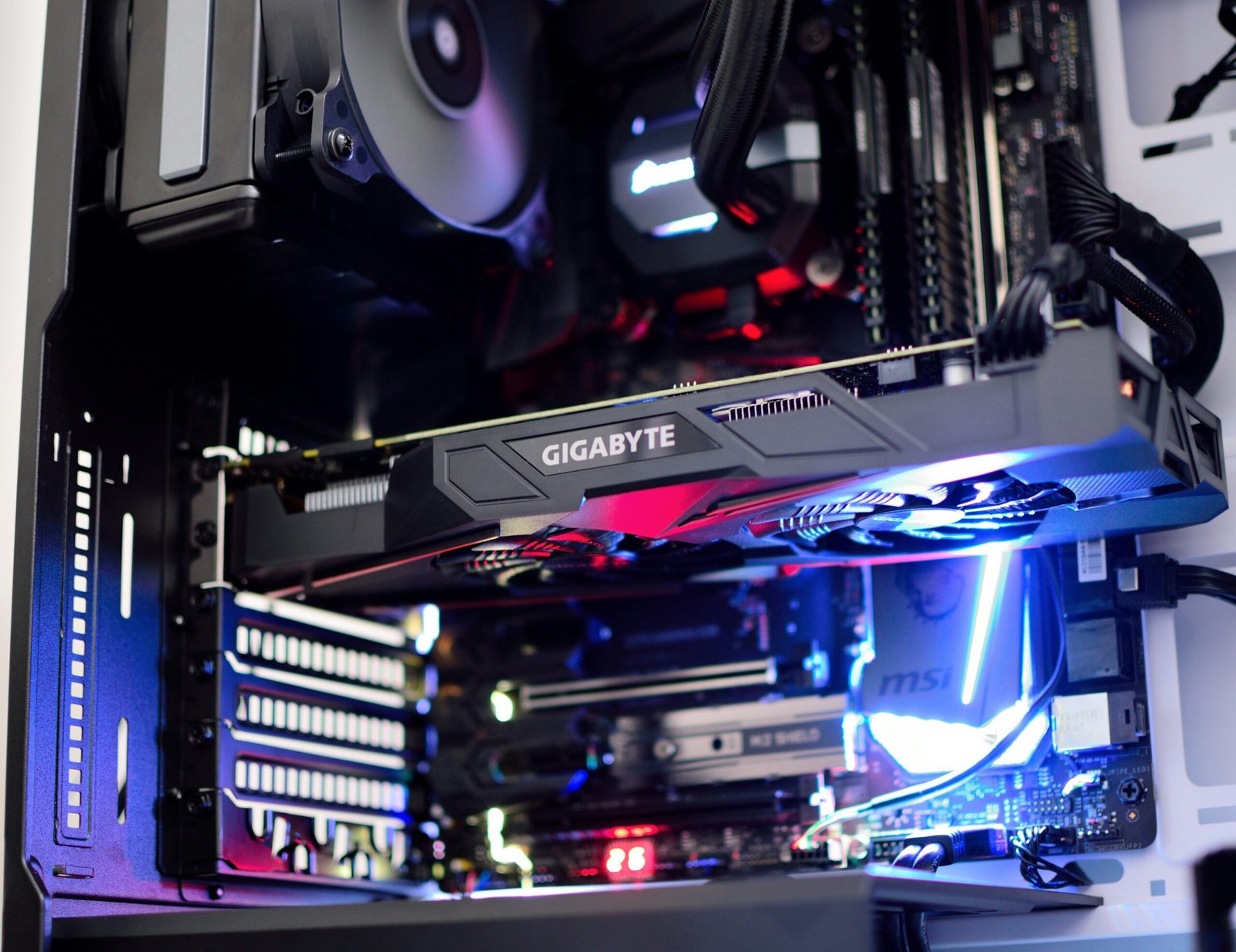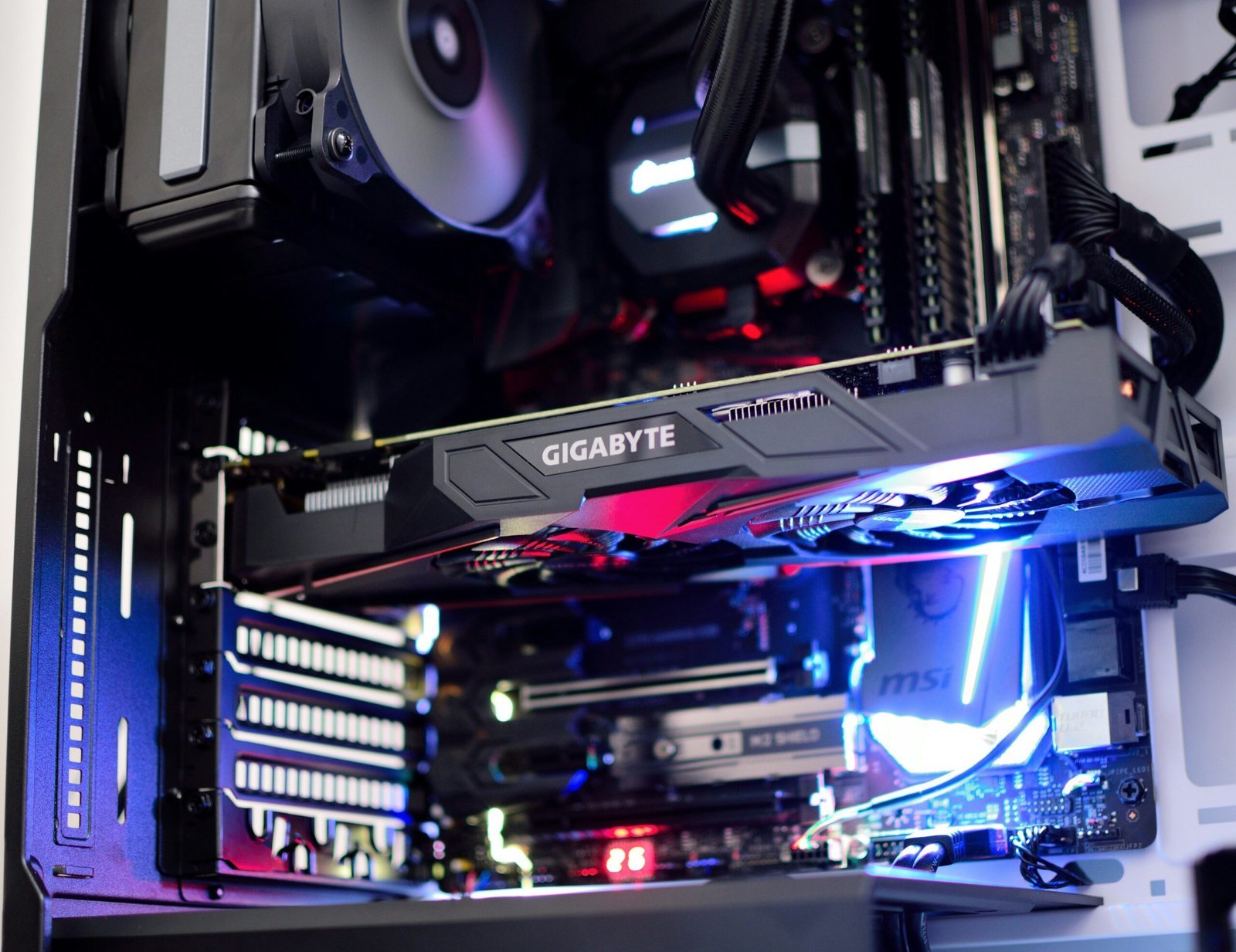
Understanding Hard Disk Failure: Causes and Preventative Measures
January 6, 2025
The Ultimate Guide to Data Recovery: Why Choose Bluetech Computers Systems
August 5, 2025Comparing the RTX 5000 Series: Specs, Performance, and Power Consumption Across Models

Photo by Rafael Pol on Unsplash

Overview of the RTX 5000 Series
The NVIDIA RTX 5000 series represents a significant leap in graphical performance and technology for both gamers and professionals. Launched as the successor to the RTX 4000 series, this new generation of graphics cards boasts enhanced capabilities that are designed to meet the growing demands of modern computing applications. Key features include improved ray tracing performance, advanced AI-driven rendering technologies, and a higher overall level of efficiency.
One of the most notable advancements in the RTX 5000 series is the integration of NVIDIA’s latest architecture, known for its ability to deliver stunning visuals and exceptional frame rates. This architecture, paired with expanded memory bandwidth and storage options, allows for smoother gameplay and more realistic graphics in the most demanding titles. Furthermore, these graphics cards support the latest video output standards, which enables compatibility with high refresh rate displays and 8K gaming.
The RTX 5000 series consists of several models tailored to a variety of use cases. From the entry-level options aimed at casual gamers to high-end variants designed for professional creators and enthusiasts, the series accommodates a broad spectrum of performance needs. Each model comes equipped with different amounts of GPU memory and processing power, making it important for potential buyers to carefully consider their specific requirements, whether they involve gaming, 3D rendering, or machine learning tasks.
In addition to their impressive specifications, the RTX 5000 series offers improvements in power consumption, making them more efficient compared to previous generations. This focus on energy efficiency is critical as users become increasingly aware of their environmental impact and operating costs associated with high-performance computing. The RTX 5000 series thus not only elevates graphical performance but also promotes a more sustainable approach within the technology landscape.
Detailed Specifications of Each Model
The RTX 5000 series has redefined the landscape of graphics processing units. Each model offers unique specifications that cater to various use cases, from gaming to professional workloads. At the entry level, the RTX 5050 features a core count of 2,000 CUDA cores. These cores operate at a base clock speed of 1.5 GHz, with a boost clock reaching 1.8 GHz. This foundational model is equipped with 8 GB of GDDR6 memory, providing sufficient bandwidth for modern gaming at 1080p resolutions. Its thermal design power (TDP) stands at a modest 150 watts, making it an ideal choice for budget-conscious users.
Stepping up, the RTX 5060 offers enhancements in performance with 3,000 CUDA cores and higher clock speeds. The base clock for this model is around 1.6 GHz, with boosts up to 2.0 GHz. It retains the same 8 GB GDDR6 memory but incorporates a more efficient cooling solution, featuring dual fans and optimized airflow mechanics. This increased core count results in noticeable improvements in frame rates and rendering, particularly in demanding gaming scenarios.
At the high end of the spectrum, the RTX 5090 boasts an impressive 4,500 CUDA cores, operating at a base clock of 1.8 GHz and an impressive boost clock that can reach 2.2 GHz. This top-tier model supports up to 24 GB of GDDR6X memory, facilitating high-resolution textures and advanced graphics settings in professional applications and gaming alike. With a TDP of 300 watts, the RTX 5090 requires robust cooling solutions and power supply setups, making it suitable for enthusiasts and professionals who demand peak performance.
In examining these specifications, it becomes evident that while the lower-end models provide accessible entry points, the higher-end RTX 5000 series options deliver unmatched performance through superior core counts, clock speeds, and extensive memory configurations. Understanding these technical details can significantly aid users in selecting the most suitable model for their needs.
Performance Comparison Across Models
The RTX 5000 series, renowned for its cutting-edge architecture and capabilities, has garnered significant attention due to its performance across various applications. When comparing the models within this series, benchmarks reveal notable distinctions that cater to diverse user needs, particularly in gaming, 3D rendering, and machine learning.
In gaming scenarios, the RTX 5000 series exhibits exceptional frame rates and graphical fidelity at various resolutions. For instance, the RTX 5070 showcases impressive performance in popular titles, maintaining high settings while delivering smooth gameplay at 1440p and even 4K in less demanding games. Conversely, the RTX 5090 stands out as the flagship model, pushing boundaries with enhanced ray tracing capabilities and superior performance in 4K gaming, making it an ideal choice for enthusiasts seeking maximum quality during gameplay.
3D rendering performance is another critical factor when assessing the models within the RTX 5000 series. The RTX 5080, equipped with a robust number of CUDA cores, excels in rendering tasks, significantly reducing time in professional workflows like architectural visualizations or animation. The acceleration offered by the GPU’s hardware-based ray tracing functionalities streamlines processes, ensuring that creators can achieve efficient results without compromising on quality.
In the realm of machine learning, where computational power is paramount, the RTX 5070 and RTX 5090 emerge as front-runners. Both models leverage AI-based technologies, making massive parallel processing possible. While the RTX 5090 boasts a higher processing speed, the RTX 5070 remains competitive, capable of handling large datasets efficiently. This makes both models suitable for researchers and developers engaged in AI training and other computationally intensive tasks.
Ultimately, the choice between these models depends on specific user requirements. Whether prioritizing gaming, content creation, or machine learning, evaluating the performance differences across the RTX 5000 series will empower potential buyers to make informed decisions that align with their needs.
Power Consumption and Efficiency Analysis
The RTX 5000 series has garnered attention not only for its impressive specifications and performance but also for its power consumption and energy efficiency. As gaming and professional workloads become increasingly demanding, understanding the power draw of each model in the series is essential for informed purchasing decisions.
When examining the power consumption of the RTX 5000 series, it is crucial to differentiate between peak power draw and typical usage scenarios. The peak power draw refers to the maximum amount of energy consumed when the GPU is under full load, such as during intensive gaming or rendering tasks. Conversely, typical usage scenarios represent the energy consumed during various everyday activities, including less demanding gaming or web browsing. For instance, while the higher-end RTX 5090 may exhibit a peak draw of around 450 watts, real-world usage may see it consuming significantly lower amounts, leading to improved overall efficiency.
An examination of efficiency highlights the advancements made in thermal design and power management in the RTX 5000 series. Each model features improved architecture that optimizes performance per watt. For example, the RTX 5070 exhibits remarkable performance while maintaining a lower power consumption profile compared to its predecessor. This is a significant consideration for both gaming enthusiasts and professionals who aim for high performance without substantially increasing their energy bills.
Additionally, power usage can heavily influence overall system performance and long-term operational costs. High power consumption can lead to elevated thermal outputs, which may necessitate more robust cooling solutions, further adding to the overall cost. Therefore, optimizing for energy efficiency within the RTX 5000 series models not only enhances gaming experiences but can also yield significant savings in energy costs over time.


